How to Choose a Peel for Your Face
Your skin regenerates approximately every 30 days — new cells, which push the old ones to the surface, are formed in the middle layer. However, sometimes dead cells are not removed completely and accumulate together. This leads to flaky skin, dry spots, and clogged pores. The good thing is that peeling helps remove dead cells from the skin’s surface. For that, you can use mechanical or chemical products.
5-Minute Crafts is telling you what types of peels are available to you and sharing how to choose the right product for your skin type.
The tips in the article are general. We recommend that you consult with a cosmetologist to find out your skin type and choose the right peel.
Brushes, sponges, and gloves for peels
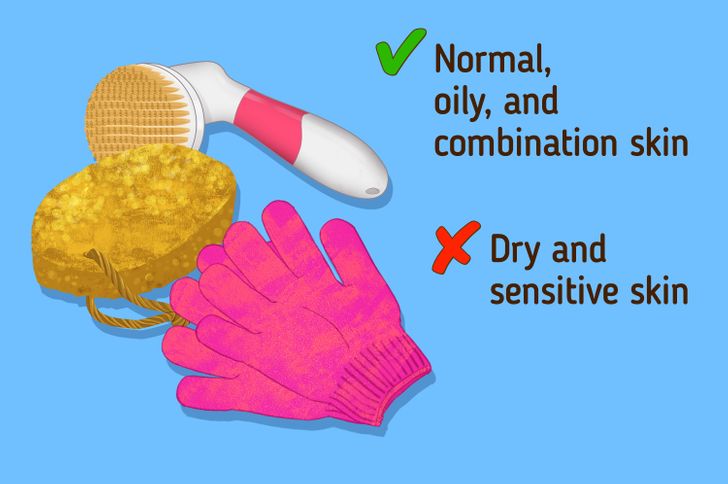
Brushes, sponges, and gloves for peels related to mechanical peeling products:
-
A brush is made of soft bristles that help remove dead skin cells from the face and body. Exfoliation with a brush can be done either dry or with a cleansing product, such as foam or gel.
-
A sponge is basically softer than a brush and is suitable for gentle exfoliation of the skin. A foam or a gel is normally applied to the sponge, and the skin is gently rubbed with it.
-
Gloves are most often used for body peels. But you can also use them to exfoliate the facial skin if, for some reason, a brush or a sponge turned out to be inconvenient for you. A cleansing agent is applied to the gloves and the skin is gently rubbed with it.
✅ This is suitable for normal, oily, and combination skin.
❌ This is not recommended for dry and sensitive skin.
Scrubs
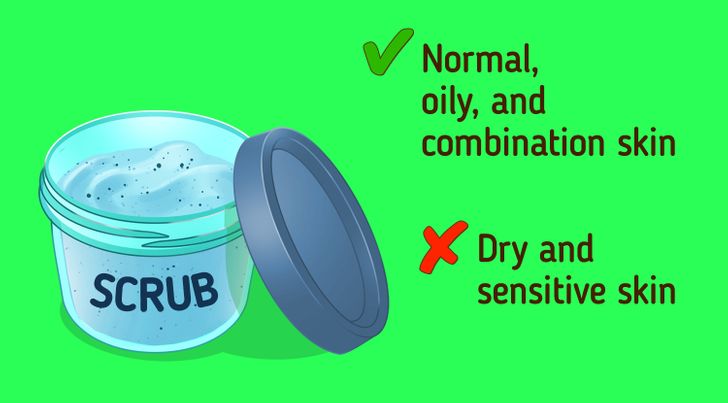
A scrub is a liquid cosmetic product with a grainy texture. It is achieved with the help of solid particles in its composition that exfoliate the skin. When applied to the skin, it removes dead cells and makes the skin’s surface smoother.
Be careful when choosing scrubs and avoid ones that contain rough solid particles, such as coarse salt, sugar, crushed apricot pits, and other ground grains. Instead, give preference to scrubs with soft, round granules. They softly exfoliate the skin and help you to avoid irritation.
✅ This is suitable for normal, oily, and combination skin.
❌ This is not recommended for dry and sensitive skin.
Acid peels (AHA-acids)
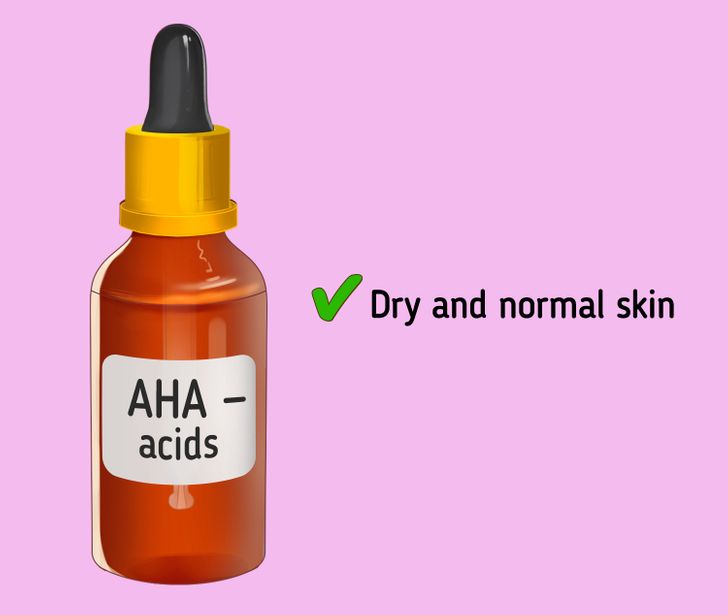
Alpha hydroxy acids (AHAs) are plant-based ingredients that dissolve dead cells and remove them from the surface of the skin. Acids are related to the products of chemical peels, which can be used both at home or in a salon.
Acids, such as glycolic, citric, malic, and lactic, are a part of the AHA-acid group. They possess a mild exfoliating effect, while the lactic acid is also moisturizing. That’s why they’re recommended for dry and normal skin types.
AHA-acids can be used separately or in a complex. However, it’s recommended to start with products that contain only one AHA-acid in order to understand how your skin reacts to this product. If everything is good, you can try a complex of AHA-acids.
✅ This is suitable for dry and normal skin.
Acid peels (BHA-acids)
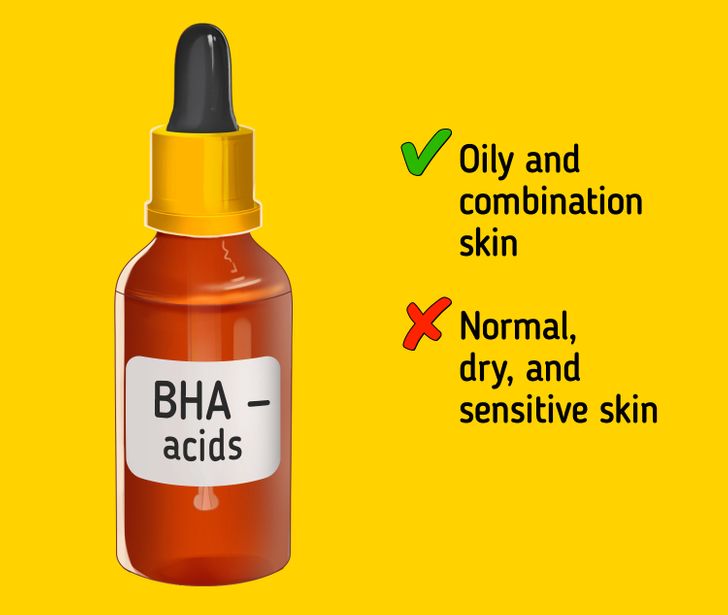
Just like AHA-acids, beta hydroxy acids (BHA) relate to the products of chemical peels. Salicylic acid is the most popular for cosmetic purposes. It deeply exfoliates the skin, dissolves sebum, and unclogs clogged pores. It helps to reduce inflammation common in oily to combination skin.
✅ This is suitable for oily and combination skin.
❌ This is not recommended for normal, dry, and sensitive skin.
Enzyme peels
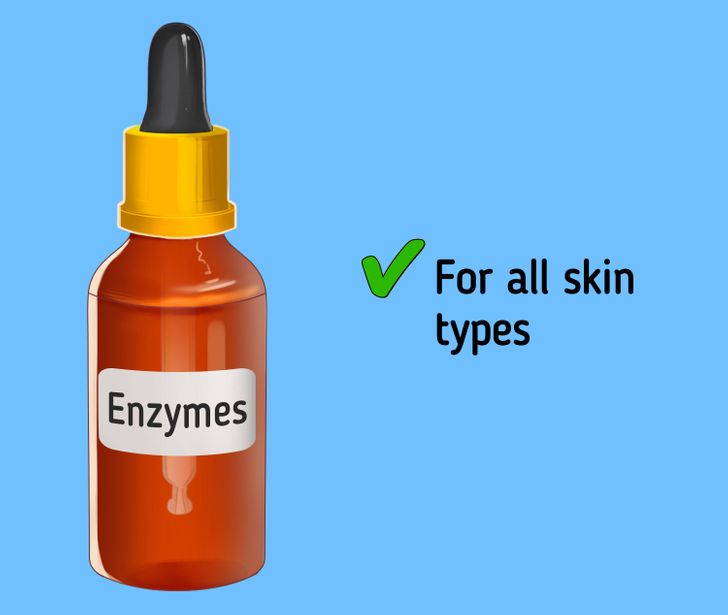
Enzyme peels also relate to chemical ones and contain fruit enzymes that gently remove dead skin cells. Unlike acids, enzymes don’t stimulate cell renewal and, therefore, are suitable for those with sensitive skin.
Enzyme peels use papaya and pineapple ferments. They are indicated in the composition of these products under the names papain and bromelain, respectively.
✅ This is suitable for all skin types, especially sensitive skin.
The frequency of use
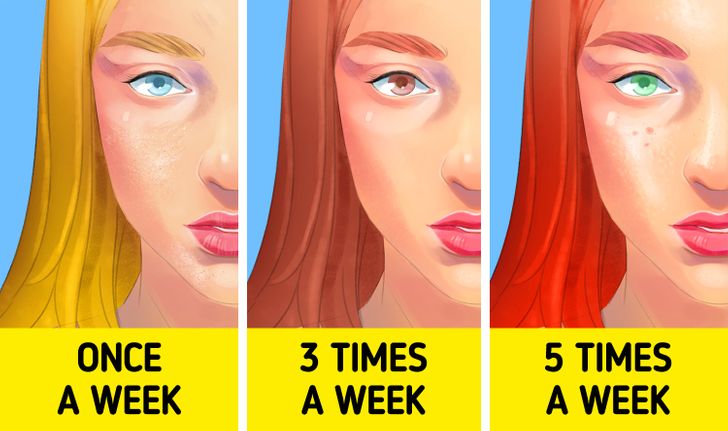
The frequency of peels depends on the type of the skin:
- For sensitive skin, it’s optimal to do peels 1-2 times a week.
-
For normal and combination skin, peels can be used up to 3 times a week.
-
For oily skin, use peels up to 5 times a week.
-
For dry skin, use peels no more than once a week.
These are conditional recommendations. Make your decision based on the condition of your skin after the procedures. If it still looks dull and your pores are clogged, it may be worth increasing the frequency of exfoliation. But, on the contrary, if you see clear changes, stick to the recommended frequency or reduce it.
Safety measures
-
Apply the products carefully, and strictly follow the instructions on the package. Don’t press or rub your skin too hard, especially if you’re using mechanical peel products.
-
Don’t use exfoliators if you have open wounds or burned skin.
-
Peeling can dry your skin, which is why you should make sure to apply moisturizing cream after each procedure to keep things healthy and moisturized.
-
Peeling increases the sensitivity of the skin, so it’s recommended to use sunscreen afterward.
-
Use peeling products very carefully if you have acne, rosacea, or other skin conditions. Ideally, consult a dermatologist and test any product for possible allergic reactions before using it. To do this, apply a small amount to the skin at the inside bend of the elbow.
-
Stop using a peel if you notice that your skin turns red, gets inflamed, starts to peel off, or gets irritated.
-
Refuse a peel if you’re taking medicine or are using a treatment for acne, such as retinol or benzoyl peroxide. This can worsen the skin’s condition and lead to rashes.